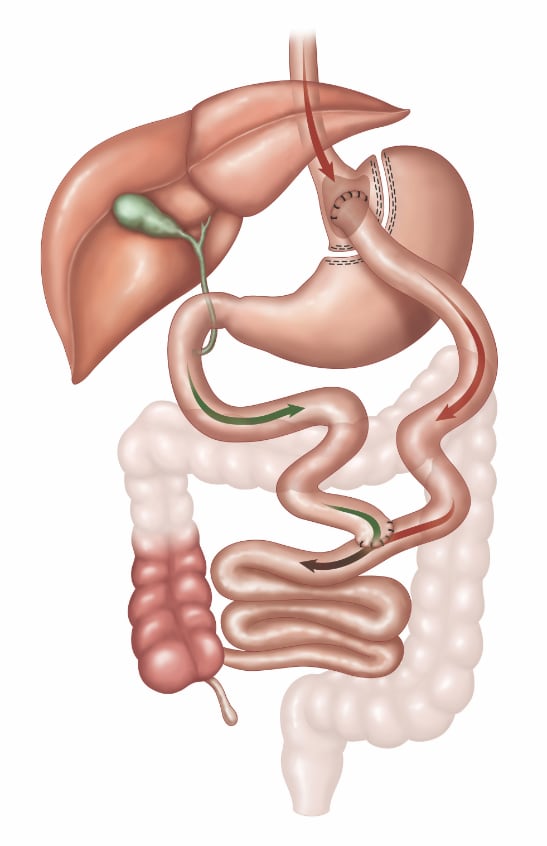Gastric Bypass
 One of the most common weight loss surgical procedures performed in the United States and considered to be the gold standard for weight loss surgery, Roux-en-Y Gastric Bypass combines both restrictive and malabsorptive components. This procedure restricts both food intake and the amount of calories and nutrients the body absorbs.
One of the most common weight loss surgical procedures performed in the United States and considered to be the gold standard for weight loss surgery, Roux-en-Y Gastric Bypass combines both restrictive and malabsorptive components. This procedure restricts both food intake and the amount of calories and nutrients the body absorbs.
In Roux-en-Y Gastric Bypass, the stomach is made smaller by creating a small pouch at the top of the stomach using surgical staples. By creating this small stomach pouch, food intake is restricted.
The smaller stomach is then connected directly to the middle portion of the small intestine (jejunum), bypassing the rest of the stomach and the upper portion of the small intestine (duodenum). This reduces the amount of calories and nutrients that is absorbed by the body.
This procedure is done by laparoscopic, or minimally invasive surgery, through a few small incisions using small instruments and a camera to guide the surgery, and typically requires a two-day hospital stay. Laparoscopic surgery allows for faster recovery, less post-operative pain and fewer wound complications, such as infections and hernias, than open surgery.
Roux-en-Y Gastric Bypass is currently indicated for patients with a Body Mass Index (BMI) of 35 or above. Patients with a BMI of 30-34.9 qualify if they have an obesity-related comorbidity.
Patients are asked to follow-up with us every three months the first year, every 6 months the second year and then annually for a review that includes physical examination, nutritional evaluation, labs and the latest information regarding their continuing care. Follow-up visits are critical in order to optimize weight loss and prevent or detect early any issues or deficiencies.